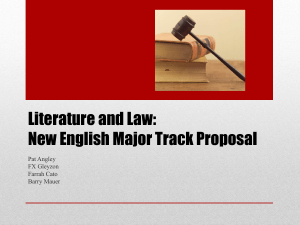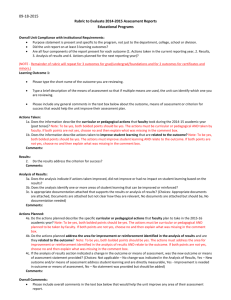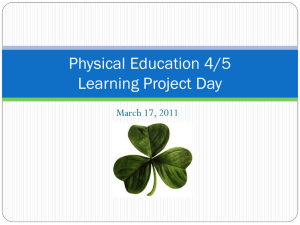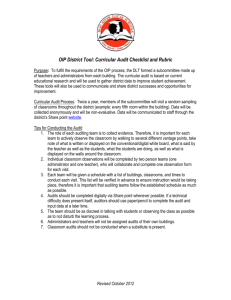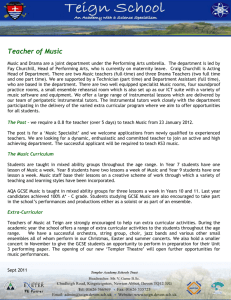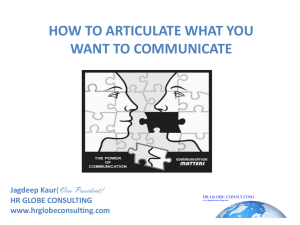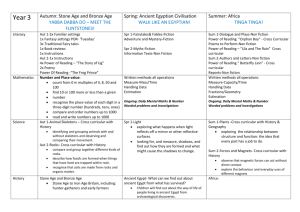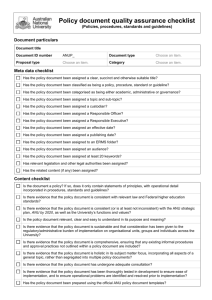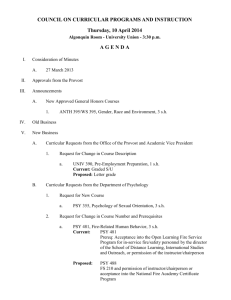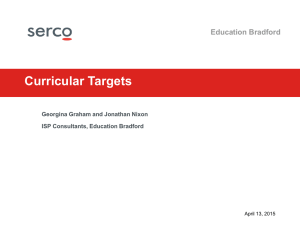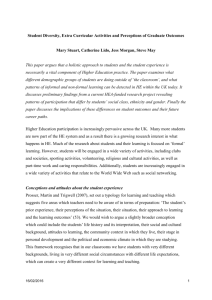Arts and Sciences Online Course Quality Matters Checklist Rubric
advertisement
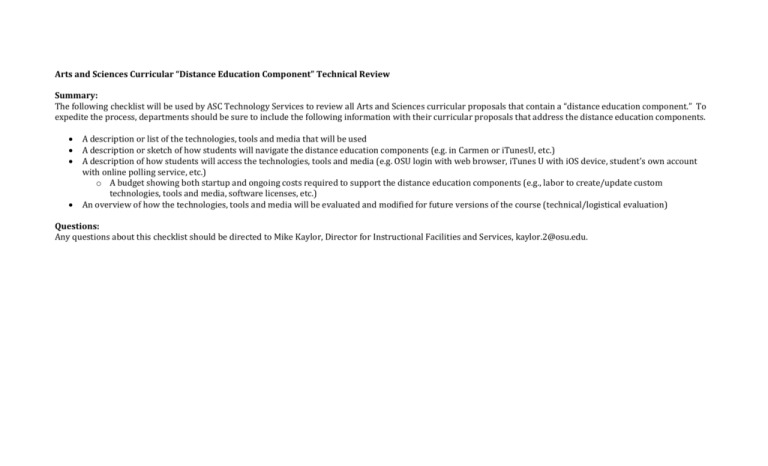
Arts and Sciences Curricular “Distance Education Component” Technical Review Summary: The following checklist will be used by ASC Technology Services to review all Arts and Sciences curricular proposals that contain a “distance education component.” To expedite the process, departments should be sure to include the following information with their curricular proposals that address the distance education components. A description or list of the technologies, tools and media that will be used A description or sketch of how students will navigate the distance education components (e.g. in Carmen or iTunesU, etc.) A description of how students will access the technologies, tools and media (e.g. OSU login with web browser, iTunes U with iOS device, student’s own account with online polling service, etc.) o A budget showing both startup and ongoing costs required to support the distance education components (e.g., labor to create/update custom technologies, tools and media, software licenses, etc.) An overview of how the technologies, tools and media will be evaluated and modified for future versions of the course (technical/logistical evaluation) Questions: Any questions about this checklist should be directed to Mike Kaylor, Director for Instructional Facilities and Services, kaylor.2@osu.edu. Arts and Sciences Distance Education Online Course Component Technical Review Checklist Summary: This form is to be completed by Diane Dagefoerde and Mike Kaylor from ASC Technology Services in order to evaluate the technical aspects of any curricular proposal that includes a “distance education component.” Once completed it will be returned to the appropriate ASC Divisional Curricular Associate/Assistant Dean. This rubric is based on the “Course Technology” and “Learner Support” parts of the Quality Matters Program.1 COURSE TECHNOLOGY Standard 1 1. The tools and media support the course learning objectives. 2. Course tools and media support student engagement and guide the student to become an active learner. 3. Navigation throughout the online components of the course is logical, consistent, and efficient. 4. Students can readily access the technologies required in the course. 5. The course technologies are current. Yes Yes with Revisions See the Quality Matters Rubric at https://www.qualitymatters.org/rubric No Feedback/Recommendations 6. Funding and support for the course technologies are sustainable for future sections of the course. 7. The course technologies, tools and media will be evaluated and updated as underlying technologies, platforms and approaches change. 8. The course instructions articulate or link to a clear description of the technical support offered and how to access it. 9. Course instructions articulate or link to the institution’s accessibility policies and services. 10. Course instructions articulate or link to an explanation of how the institution’s academic support services and resources can help students succeed in the course and how students can access the services. 11. Course instructions articulate or link to an explanation of how the institution’s student support services can help students succeed and how students can access these services. Reviewer Information Date Reviewed: Reviewed By: General Comments:
